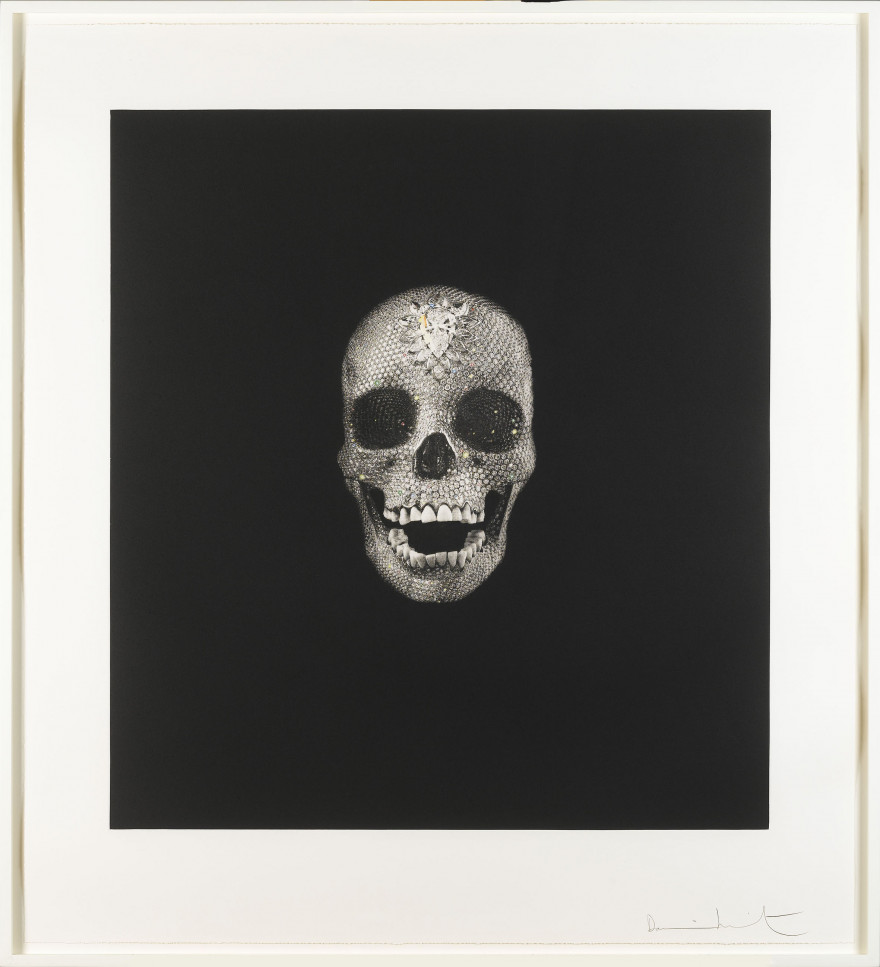
Momento mori, Damien Hirst, 2007
I really didn’t think, at least back when Damien Hirst made Momento Mori, that the excessively expensive bits and pieces that take up precious counter space next to the coffee machine actually make much, if any difference. After all, for ever and ever, the only tamping tool available to the average professional barista was the plastic thingamajig attached, seemingly very much as an afterthought, to the average professional-barista-grade grinder.
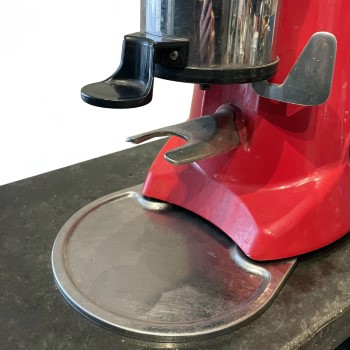
Tamping seemed to be more about not spilling the coffee rather than mandatory puck preparation. For years and years, in my house “the tamper” was one of the those domed black plastic mushrooms that lived in a drawer under the counter. Eventually I bought a nice metal one with a wooden handle. Then, a few years ago and very grudgingly, I had to admit that stirring the coffee before tamping does indeed yield better results and so I added a cripplingly expensive bamboo kebab skewer “distribution tool” to the coffee-making routine at home. To be clear, when I come down in the morning, bleary eyed, barely able to say “coffee” let alone make it, I just want coffee, like now-ish: a timed hopper grinder delivers the same beans until they run out, a quick stir with the skewer to even out the pile, tamp, pull the shot. At work, on the other hand, we make coffee: there are at least nine bags of beans open at any one time and the gadgets are all out on parade.
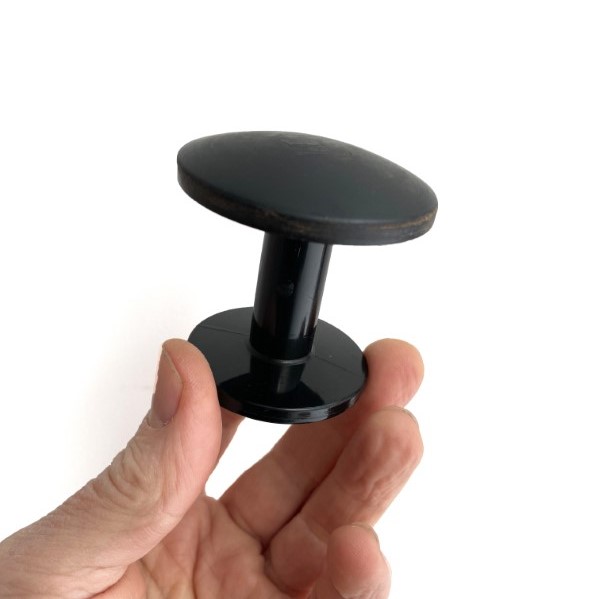
Nowadays of course, you can buy diamond-encrusted knock-boxes in the shape of a skull1, jade-handled cupping spoons and revolutionary, celebrity-endorsed, septadecagonal morph-bladed distribution wedges that promise unparalleled extraction performance and fanbase fulfillment. And who wouldn’t want those? But seriously, the vast array of accessories available does lead one to wonder why the world could possibly need any more coffee tools. I mean, really, in a pinch, any half-decent tamper and a few needles stuck in a wine cork will most definitely meet or exceed todays exceedingly demanding2 puck preparation standards. “But”, I thought, after stabbing myself yet again while trying to pick up our Weiss Distribution Tool, “maybe there is a better way?”
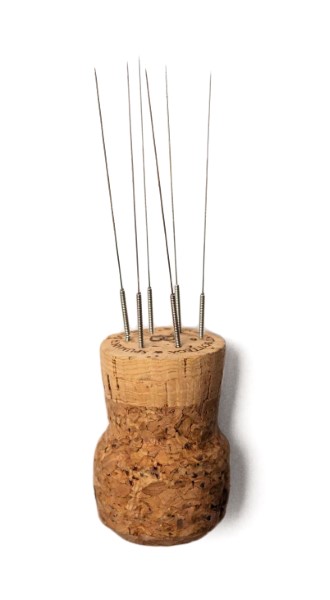
After all, it takes time to figure out what form new technologies (of which the distribution tool is one, if admittedly not a terribly complicated one), should take. I mean, the telephone started out as a wooden box with a fixed mouth-piece and hand-held ear-piece and it took a couple of tries before both the microphone and loudspeaker where integrated into the “receiver” and quite a few more before it became the metal and glass candy-bar that makes its nest in your pocket lint. Now obviously, many of the changes in the evolution of the telephone were driven by advances in technology, and all of the phone designs below (which I won’t name or attribute except for the Ericsson Cobra from the 50s because it is awesome) are fine examples of form being driven by function, but what is clear especially in the very early ones and the very late ones is that the answering the question of “How should a new technology actually function?” or, to put it another way, “What form should the object that embodies a new technology take?” is not always as easy to answer as one might think.

So, given that the coffee world has decided over the last few years that distribution tools are good and not having a distribution tool is bad, and that, weirdly, seven or eight acupuncture needles are the way to go, maybe it is time to think a little about the industrial design and current form of the tool and see if we can make it fitter for purpose? The requirements are fairly simple: seven or eight flexible and fine (0.35mm) needles, approximately 50mm long, held such that their tips are in a circle of about third of the diameter of a standard 58mm portafilter basket). Pretty straight forward. After that? Well, for starters, if you are going to have to regularly pick up the functional equivalent of a cactus, maybe the needles are better pointing down instead of up?
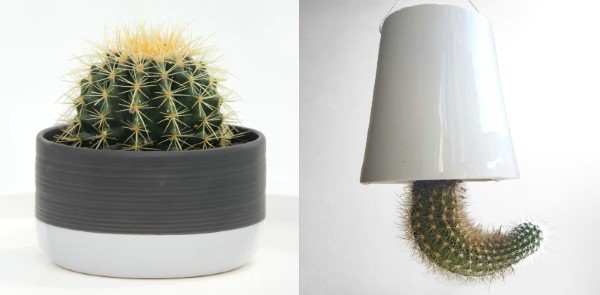
And then there is the question of balance. Other than their fundamental unfriendliness (and the fact that I’m not terribly keen on having an old wine cork full of needles rolling around on the counter), my biggest beef with the current crop of distribution tools comes down to a question of balance. In knife making, the bolster is the part of the knife between the handle and the blade, it is the visual demarcation and balance point of the knife, elegantly negotiating the transition from one material and function pair (usually steel and the dangerous bit respectively) to another (often wood or plastic and the handy, considerably less dangerous bit).
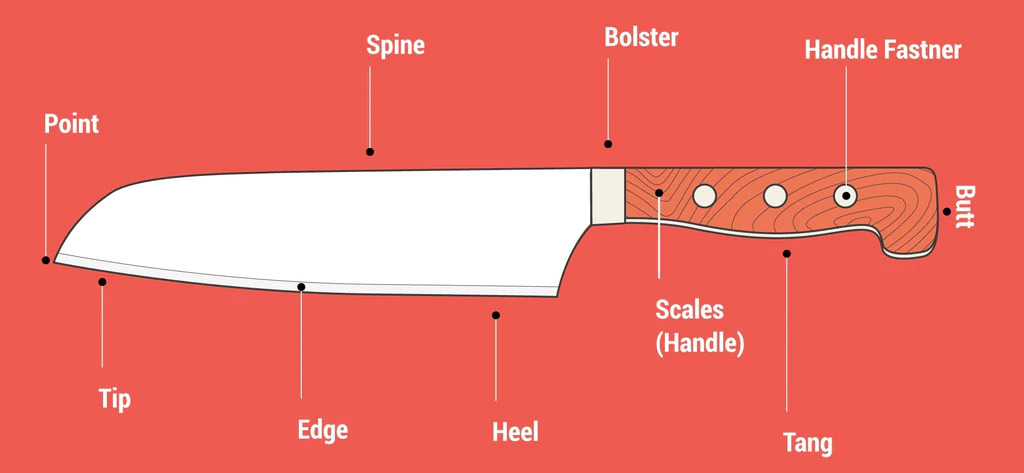
The weight distribution between the blade and the handle determine the balance of the knife. If you have used a poorly balanced knife, you will know that they are, well, poorly balanced – either the blade is too light for the work the knife is intended for, or the handle isn’t weighty or large enough to offset the force on the blade. How do you know a knife is poorly balanced? Well, like all tools, they tend to be self selecting: after a while and given a better option, your hand just gravitates to the best one for the job. (As an aside, Anthony Bourdain’s advice to home chefs on knives was to get a small number of good ones as opposed to a giant “knife set” of indifferent quality. He fantasized about going through people’s kitchen drawers and throwing away all the crappy knives). Here are two of my favorite knives at opposite ends of the balance spectrum: an inexpensive Chinese all-stainless lightweight cleaver that doubles as a chef’s knife and a far more expensive German-made aluminum-handled oyster knife, that doubles as, well, nothing, but boy is it good for oysters. Both of them are exceptionally well balanced for their high-force tasks and are all-round excellent pieces of design.
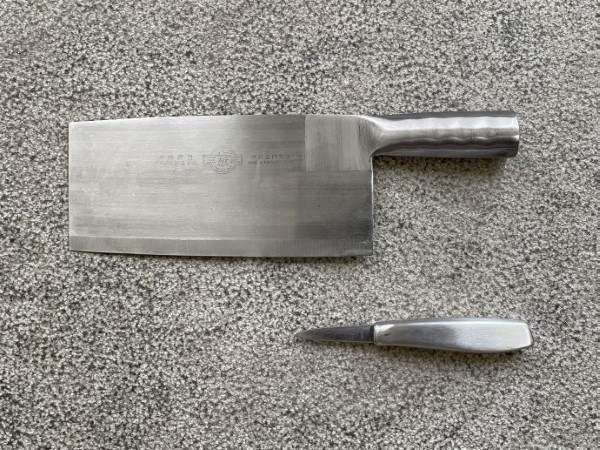
In the case of the wine-cork style design of distribution tool, and all of the custom-made solutions that derive from the idea, essentially ALL of the weight is in the handle and very little of is located past the typical tips-of-your-fingers gripping position with which you need to hold the tool for such a delicate task. Also, knife grips are ergonomically shaped to fit your hand – or at least the good ones are. Wine corks are ergonomically shaped to fit, well, wine bottles.
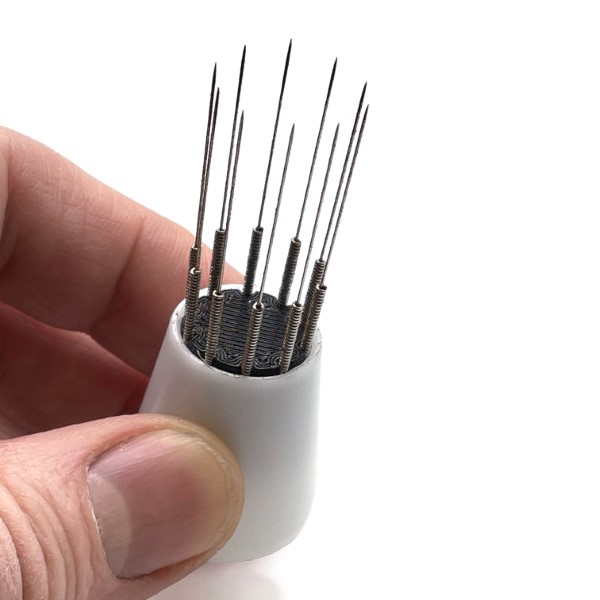
So, first, some form studies with the rapid-prototyping machine to find a comfortable shape to hold with a precision, delicate task grip.
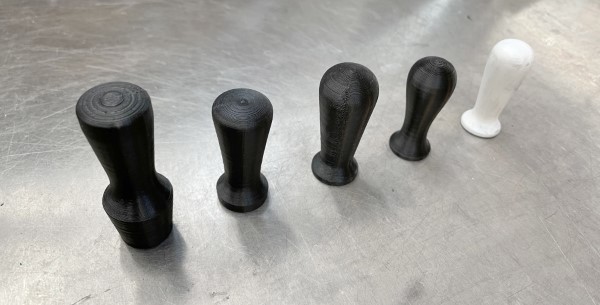
And then lots of fooling around with stainless steel bolsters and various ferrules to adjust the overall mass and balance point of the tool to below the gripping point so that the needles feel like they are actually there and have just the right heft for stirring ground coffee…

…until we get to this: the properly weighted, properly balanced, properly precision Lapera Disaggregation and Distribution Tool:
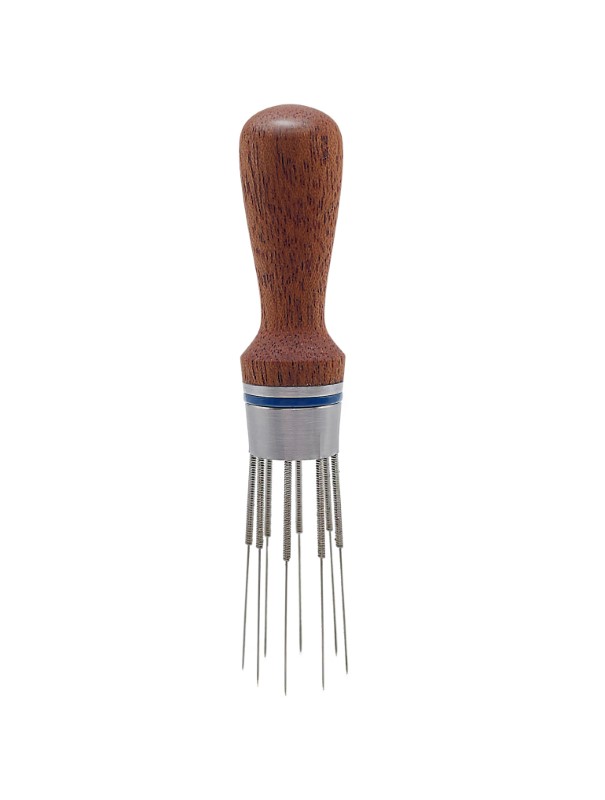
The bolster and tang (the part that extends into the handle) are machined from a single piece of stainless steel which is set into the wooden handle blank prior to shaping it. The final pass on the lathe actually removes a small amount of the bolster so that the wood is perfectly concentric with the metal. The thermoplastic pin cartridge inside the ferrule is removable to allow needle replacement.

But this is only one half of the design. The other half is, of course, the stand – to keep the cactus pointing in the right direction. The materials and aesthetics for the stand borrow heavily from the same classic coffee machine design language as the Lapera DS. Abstracted and distilled down to its fewest parts and sparsest form, the delicate asymmetrical “Solo” stand is folded from a single piece of laser-cut cold-rolled steel and finished with a durable polymer resin powder coat which has enough elasticity to cushion the natural wood handle of the distribution tool. The assembly is completed with a silicone anti-slip base underneath that adds stability and protects precious countertops.
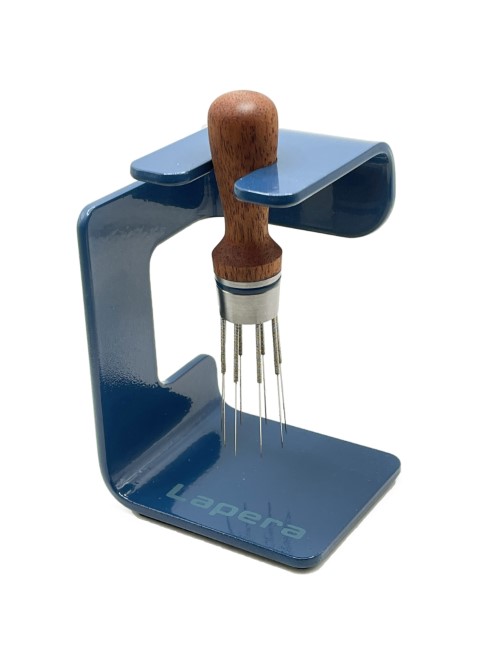
The receiver is keyhole shaped to retain the tool in position until you pick it up. Taking the tool out and returning it to the stand are intuitive gestures, but the tool won’t fall out on its own.
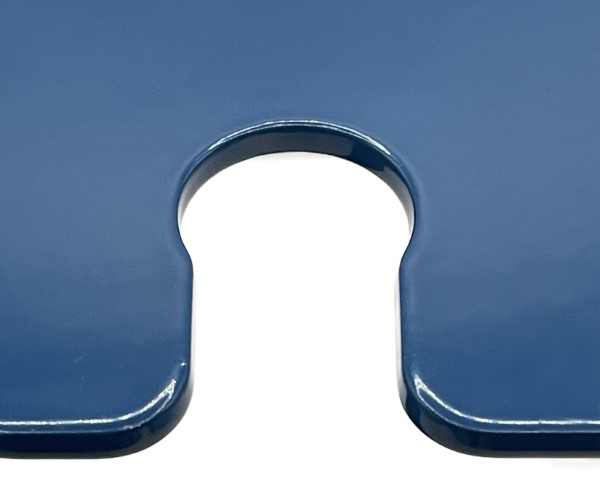
But of course, the whole point of the coffee world’s adoption of the distribution tool is that it is supposed to be integrated into the actual workflow of making espresso. So… we also made the “Falcon”.
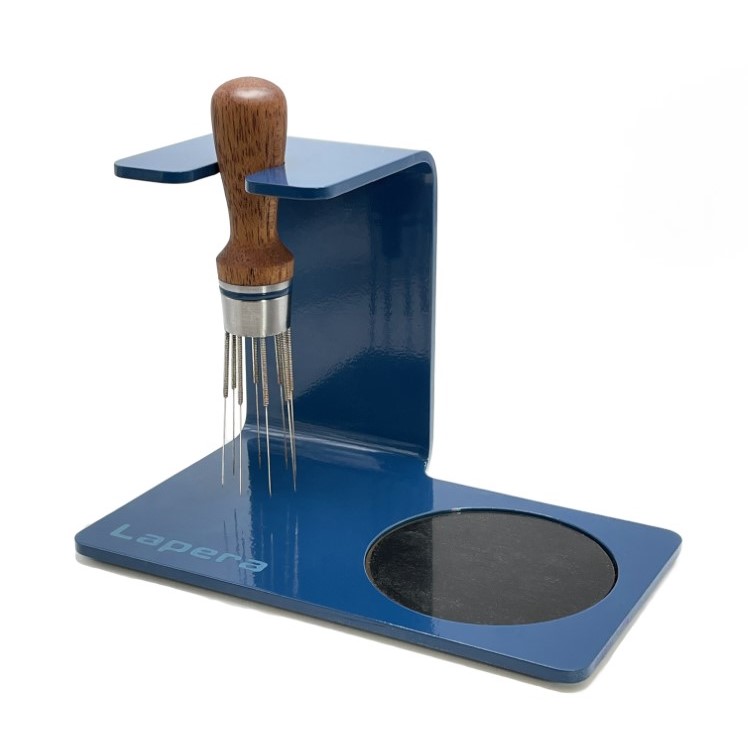
And a tamper to go with it too, whose name is Chewie.

The Picky Tools are being released as a limited first edition. There are 25 each of Solo, Falcon with Chewie the tamper and Chewie on his own available. Get ’em before they’re gone :)
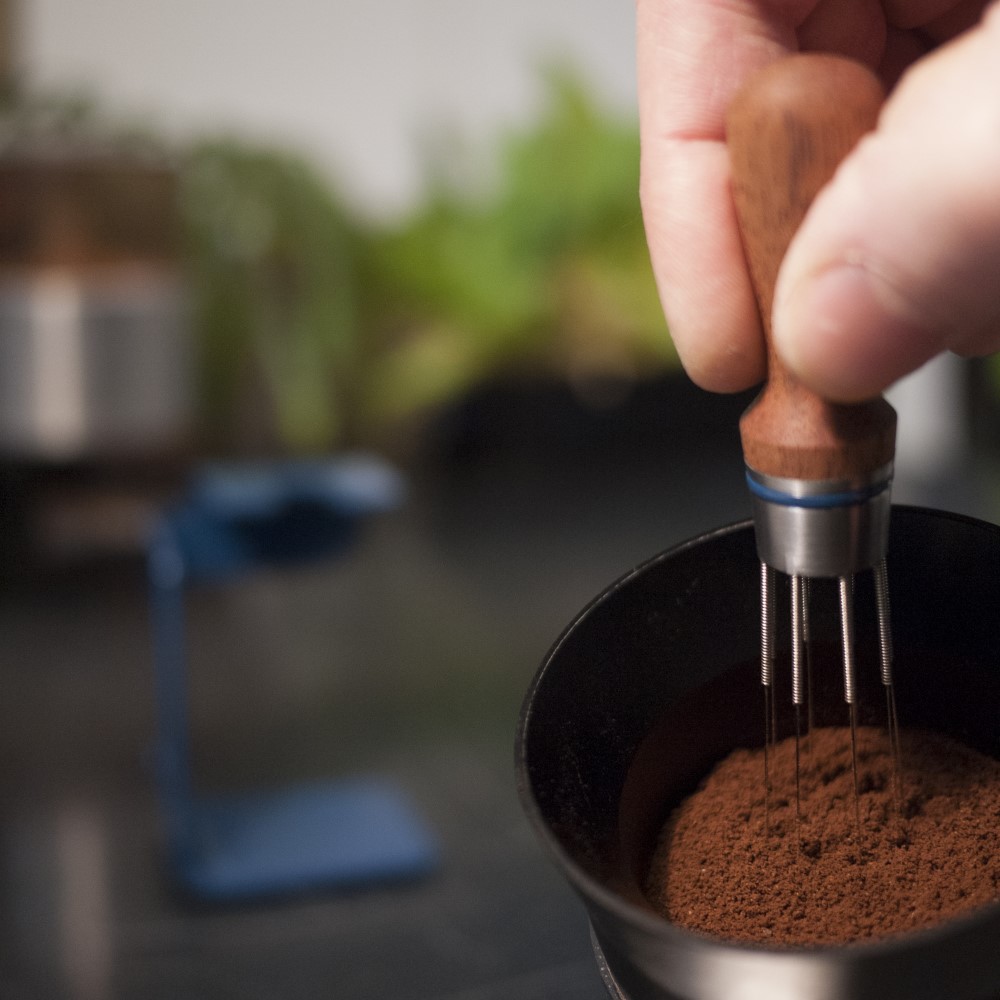
Notes
1 – Ok, you can’t really, not from Damien Hirst anyway, but don’t you wish you could?
2 – Difficult or particular? You pick.
3 – Caption – Jon’s advice to Arya, Game of Thrones (before the shark). Image – knifeaid.com
